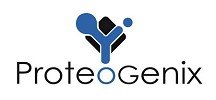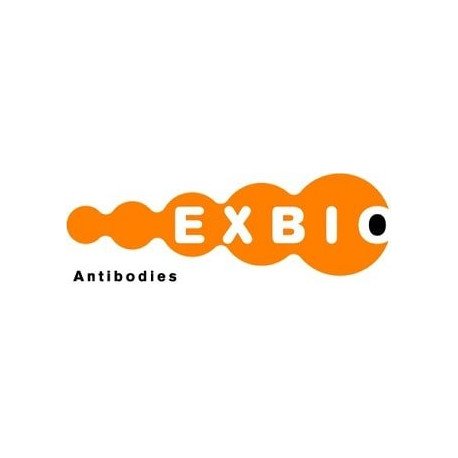Cart 0 Product Products (empty)
No products
To be determined Shipping
0,00 € Total
Prices are tax excluded
Product successfully added to your shopping cart
Quantity
Total
There are 0 items in your cart. There is 1 item in your cart.
Total products (tax excl.)
Total shipping (tax excl.) To be determined
Total (tax excl.)
Data sheet of Mouse Monoclonal to CD11a / LFA-1 alpha chain
| Brand | Exbio |
| Product type | Primary antibodies |
| Reactivity | Human |
| Clonality | Monoclonal |
| Host species | Mouse |
| Applications | FUNC, FC, IP |
More info about Mouse Monoclonal to CD11a / LFA-1 alpha chain
| Brand: | Exbio |
| Product no.: | 11-380-C025 |
| Product name: | Mouse Monoclonal to CD11a / LFA-1 alpha chain |
| Antigen: | CD11a |
| Clonality: | Monoclonal |
| Clone: | MEM-83 |
| Isotype: | IgG1 |
| Immunogen: | Human peripheral blood lymphocytes |
| Format: | purified |
| Specificity: | The antibody MEM-83 reacts with CD11a (alpha subunit of human LFA-1), a 170-180 kDa type I transmembrane glycoprotein expressed on B and T lymphocytes, monocytes, macrophages, neutrophils, basophils and eosinophils. HLDA IV; WS Code N 211 |
| Categories: | CD and Related Antigens (Human) |
| Concentration: | 1 mg/ml |
| Storage buffer: | Phosphate buffered saline (PBS) with 15 mM sodium azide, approx. pH 7.4 |
| Storage / stability: | Store at 2-8°C. Do not freeze. Do not use after expiration date stamped on vial label. |
| Background: | CD11a (LFA-1 alpha) together with CD18 constitute leukocyte function-associated antigen 1 (LFA-1), the alphaLbeta2 integrin. CD11a is implicated in activation of LFA-1 complex. LFA-1 is expressed on the plasma membrane of leukocytes in a low-affinity conformation. Cell stimulation by chemokines or other signals leads to induction the high-affinity conformation, which supports tight binding of LFA-1 to its ligands, the intercellular adhesion molecules ICAM-1, -2, -3. LFA-1 is thus involved in interaction of various immune cells and in their tissue-specific settlement, but participates also in control of cell differentiation and proliferation and of T-cell effector functions. Blocking of LFA-1 function by specific antibodies or small molecules has become an important therapeutic approach in treatment of multiple inflammatory diseases. For example, humanized anti-LFA-1 antibody Efalizumab (Raptiva) is being used to interfere with T cell migration to sites of inflammation; binding of cholesterol-lowering drug simvastatin to CD11a allosteric site leads to immunomodulation and increase in lymphocytic cholinergic activity. |
| Purity: | > 95% (by SDS-PAGE) |
| Purification: | Purified from ascites by protein-A affinity chromatography. |
| Product specific references: | *Landis RC, McDowall A, Holness CL, Littler AJ, Simmons DL, Hogg N: Involvement of the "I" domain of LFA-1 in selective binding to ligands ICAM-1 and ICAM-3. J Cell Biol. 1994 Jul;126(2):529-37., *Landis RC, Bennett RI, Hogg N: A novel LFA-1 activation epitope maps to the I domain. J Cell Biol. 1993 Mar;120(6):1519-27., *Leukocyte Typing IV., Knapp W. et al. (Eds.), Oxford University Press (1989). |
| General references: | *Fujii T, Takada-Takatori Y, Kawashima K: Roles played by lymphocyte function-associated antigen-1 in the regulation of lymphocytic cholinergic activity. Life Sci. 2007 May 30;80(24-25):2320-4., *Kellersch B, Kolanus W: Membrane-proximal signaling events in beta-2 integrin activation. Results Probl Cell Differ. 2006;43:245-57., *Giblin PA, Lemieux RM: LFA-1 as a key regulator of immune function: approaches toward the development of LFA-1-based therapeutics. Curr Pharm Des. 2006;12(22):2771-95., *Sarantos MR, Raychaudhuri S, Lum AF, Staunton DE, Simon SI: Leukocyte function-associated antigen 1-mediated adhesion stability is dynamically regulated through affinity and valency during bond formation with intercellular adhesion molecule-1. J Biol Chem. 2005 Aug 5;280(31):28290-8. |
| Shipping condition: | Room temperature |


